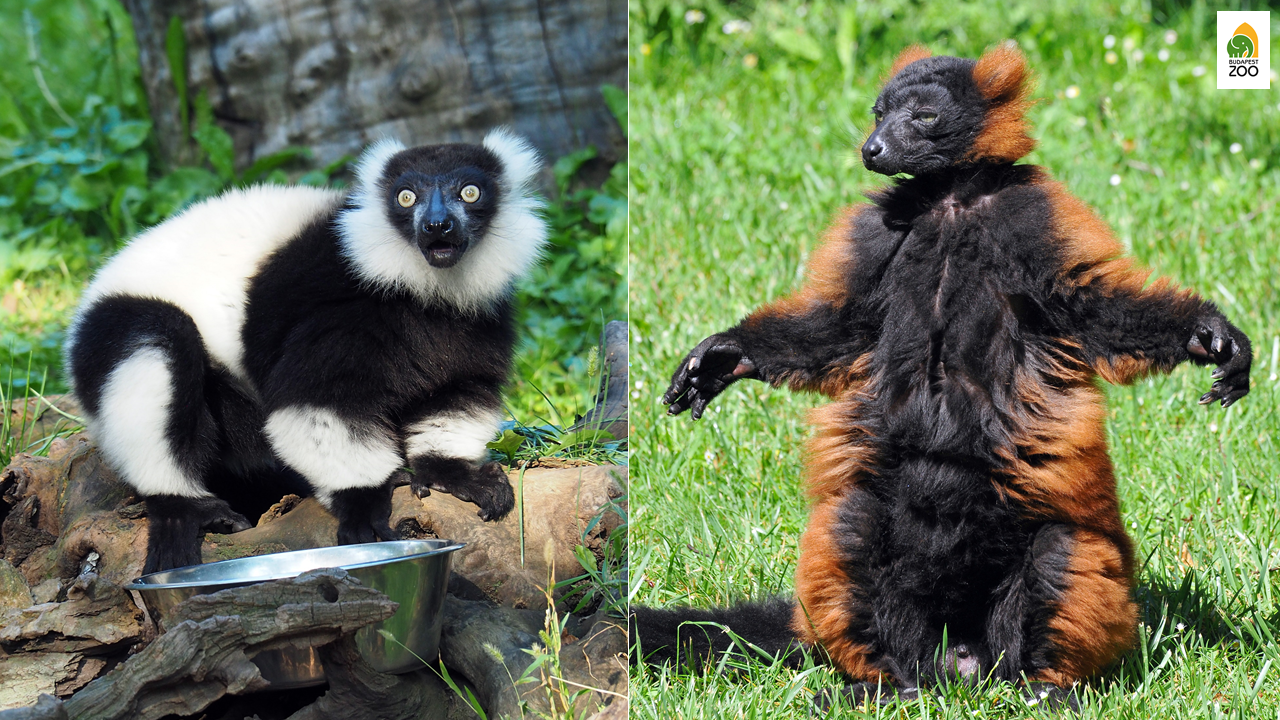Lemur variations October 16, 2019
 Out of the lemurs most people know cattas, the ring-tailed lemur, probably because of the famous cartoon character King Julien. Of course, you can see such animals here as well. But we also deal with other types of lemurs besides ring-tailed ones. For example, the ruffed lemur, formerly known in Hungarian as the multi-coloured maki.
Out of the lemurs most people know cattas, the ring-tailed lemur, probably because of the famous cartoon character King Julien. Of course, you can see such animals here as well. But we also deal with other types of lemurs besides ring-tailed ones. For example, the ruffed lemur, formerly known in Hungarian as the multi-coloured maki.
Ruffed lemurs are known in two colour combinations: there are black and white and red and black and the latter are simply called red ruffed lemurs. For a long time, researchers thought that ruffed lemurs were all of the same species, and the two colour variants were only distinguished as sub-species. However, according to recent research, the differences are major enough to consider red (Varecia rubra) and black and white (Varecia variegata) ruffed lemurs as separate species. In our zoo we present both species of ruffed lemurs in the Madagascar House and its neighbourhood. Red and black-and-white ruffed lemurs are rare in their habitat and therefore critically endangered.
The keeping of red ruffed lemurs in our zoo has a history of about two decades (we have previously presented a small film about the veterinary treatment of one of them), and in 2013 we started dealing with black and white ruffed lemurs.
In Madagascar, native varecias are also known as lemurs, which is their English name, but they are also called in this way in many other languages. The word lemur itself is originally of Latin origin, meaning dead spirit or ghost. The first European explorers in Madagascar had heard the mysterious voices of lemurs as they filtered out of the evening forest, before seeing the actual animals themselves and so they thought that such sounds could only be emitted by ghosts. Of course, it turned out later that it was the lemurs that could be heard, but the Lemur name, referring to dead souls, stuck to the animals.